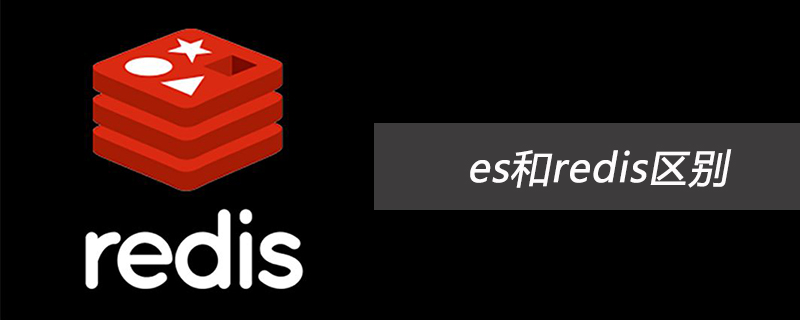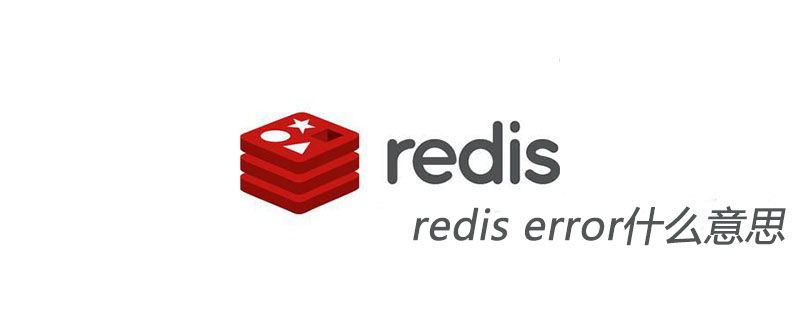What is redis
Redis is a memory-based data structure storage, durable log-type, Key-Value database. When a site using a relational database reaches a certain amount of concurrency, there will often be a bottleneck in disk IO. At this time, working with redis has certain advantages because it has the following characteristics:
Based on memory operation, high concurrent reading and writing;
supports distribution and can theoretically be infinitely expanded;
Rich data types;
Persistence, can be written to disk regularly;
Application scenarios
Cache "hot spots" "Data (high-frequency reading, low-frequency writing)
Counter, current limiter
Message queue system (publish and subscribe, ranking list)
Distributed lock, shared session, queue
Data type:
The data types provided by Redis are mainly divided into 5 types Own types and a custom type. These 5 own types include:
String type, Hash type, List type, Set type and Sorted type Set) collection type.
String type:
It can store strings, pictures, videos and other types. The maximum length supports 512M. Operation commands, such as:
GET/MGET
SET/SETEX/MSET/MSETNX
INCR/DECR
GETSET
DEL
Hash type:
This type is a map composed of fields and associated values. Among them, field and value are both of string type. The operation command is as follows:
HGET/HMGET/HGETALL
- ##HSET/HMSET/HSETNX
- HEXISTS/HLEN
- HKEYS/HDEL ##HVALS
- ##List type:
##LINDEX/LRANGE
LLEN/LTRIM
Set type:
The Set type is an unordered collection. The biggest difference between it and the List type is: The elements in the set have no order and the elements are unique.
SADD/SPOP/SMOVE/SCARD
SINTER/SDIFF/SDIFFSTORE/SUNION
The Set type is mainly used: In some scenarios, such as social scenarios, through intersection, union and difference operations, the Set type can It is very convenient to find social relationships such as mutual friends, common concerns and common preferences.
Sequential set type:
ZSet is an ordered set type. Each element is associated with a double type fractional weight. This weight is used to determine the size of the members in the set. to large order.
Like the Set type, its bottom layer is also implemented through a hash table. ZSet command:
ZADD/ZPOP/ZMOVE/ZCARD/ZCOUNT
ZINTER/ZDIFF/ZDIFFSTORE/ZUNION
-
Quick installation
yum install redis
- yum install -y epel-release yum install -y http://rpms.remirepo.net/enterprise/remi-release-7.rpm
Remi's RPM repository maintains the latest and additional packages. It is best to install EPEL first, because the Remi repository depends on it.
Use the following command to install the latest version of Redis:
- yum –enablerepo=remi install redis
After the installation is completed, you can start the redis service and start it automatically after booting up
-
##systemctl start redis
systemctl enable redis
View the redis version:
redis-cli –version
redis defaults to 127.0. 0.1 access, remember to set a password when enabling remote login! ! !Commonly used commands
Commonly used commands during testing
redis客户端连接:
本地连接:redis-cli
远程连接:redis-cli -h host -p port -a password
PING 查看服务是否运行
SELECT index 切换到指定的数据库
select 0 选择第一个库
keys * 获取所有的key
flush db 清除指定库
flushall 清除所有string
set key value
get key
hash
hset myhash name cxx
hget myhash name
list
lpush mylist a b c 左插入
rpush mylist x y z 右插入
lrange mylist 0 -1 数据集合
lpop mylist 弹出元素
rpop mylist 弹出元素
llen mylist 长度
lrem mylist count value 删除
set
sadd myset redis
smembers myset 数据集合
srem myset set1 删除
zset
zadd zset 1 one
zadd zset 2 two
zadd zset 3 threeThe above is the detailed content of centos7 yum installation redis and what are the common commands. For more information, please follow other related articles on the PHP Chinese website!
 es和redis区别Jul 06, 2019 pm 01:45 PM
es和redis区别Jul 06, 2019 pm 01:45 PMRedis是现在最热门的key-value数据库,Redis的最大特点是key-value存储所带来的简单和高性能;相较于MongoDB和Redis,晚一年发布的ES可能知名度要低一些,ES的特点是搜索,ES是围绕搜索设计的。
 一起来聊聊Redis有什么优势和特点May 16, 2022 pm 06:04 PM
一起来聊聊Redis有什么优势和特点May 16, 2022 pm 06:04 PM本篇文章给大家带来了关于redis的相关知识,其中主要介绍了关于redis的一些优势和特点,Redis 是一个开源的使用ANSI C语言编写、遵守 BSD 协议、支持网络、可基于内存、分布式存储数据库,下面一起来看一下,希望对大家有帮助。
 实例详解Redis Cluster集群收缩主从节点Apr 21, 2022 pm 06:23 PM
实例详解Redis Cluster集群收缩主从节点Apr 21, 2022 pm 06:23 PM本篇文章给大家带来了关于redis的相关知识,其中主要介绍了Redis Cluster集群收缩主从节点的相关问题,包括了Cluster集群收缩概念、将6390主节点从集群中收缩、验证数据迁移过程是否导致数据异常等,希望对大家有帮助。
 Redis实现排行榜及相同积分按时间排序功能的实现Aug 22, 2022 pm 05:51 PM
Redis实现排行榜及相同积分按时间排序功能的实现Aug 22, 2022 pm 05:51 PM本篇文章给大家带来了关于redis的相关知识,其中主要介绍了Redis实现排行榜及相同积分按时间排序,本文通过实例代码给大家介绍的非常详细,对大家的学习或工作具有一定的参考借鉴价值,希望对大家有帮助。
 详细解析Redis中命令的原子性Jun 01, 2022 am 11:58 AM
详细解析Redis中命令的原子性Jun 01, 2022 am 11:58 AM本篇文章给大家带来了关于redis的相关知识,其中主要介绍了关于原子操作中命令原子性的相关问题,包括了处理并发的方案、编程模型、多IO线程以及单命令的相关内容,下面一起看一下,希望对大家有帮助。
 实例详解Redis实现排行榜及相同积分按时间排序功能的实现Aug 26, 2022 pm 02:09 PM
实例详解Redis实现排行榜及相同积分按时间排序功能的实现Aug 26, 2022 pm 02:09 PM本篇文章给大家带来了关于redis的相关知识,其中主要介绍了Redis实现排行榜及相同积分按时间排序,本文通过实例代码给大家介绍的非常详细,下面一起来看一下,希望对大家有帮助。
 一文搞懂redis的bitmapApr 27, 2022 pm 07:48 PM
一文搞懂redis的bitmapApr 27, 2022 pm 07:48 PM本篇文章给大家带来了关于redis的相关知识,其中主要介绍了bitmap问题,Redis 为我们提供了位图这一数据结构,位图数据结构其实并不是一个全新的玩意,我们可以简单的认为就是个数组,只是里面的内容只能为0或1而已,希望对大家有帮助。
 redis error什么意思Jun 17, 2019 am 11:07 AM
redis error什么意思Jun 17, 2019 am 11:07 AMredis error就是redis数据库和其组合使用的部件出现错误,这个出现的错误有很多种,例如Redis被配置为保存数据库快照,但它不能持久化到硬盘,用来修改集合数据的命令不能用。


Hot AI Tools

Undresser.AI Undress
AI-powered app for creating realistic nude photos

AI Clothes Remover
Online AI tool for removing clothes from photos.

Undress AI Tool
Undress images for free

Clothoff.io
AI clothes remover

AI Hentai Generator
Generate AI Hentai for free.

Hot Article

Hot Tools

PhpStorm Mac version
The latest (2018.2.1) professional PHP integrated development tool

DVWA
Damn Vulnerable Web App (DVWA) is a PHP/MySQL web application that is very vulnerable. Its main goals are to be an aid for security professionals to test their skills and tools in a legal environment, to help web developers better understand the process of securing web applications, and to help teachers/students teach/learn in a classroom environment Web application security. The goal of DVWA is to practice some of the most common web vulnerabilities through a simple and straightforward interface, with varying degrees of difficulty. Please note that this software

SecLists
SecLists is the ultimate security tester's companion. It is a collection of various types of lists that are frequently used during security assessments, all in one place. SecLists helps make security testing more efficient and productive by conveniently providing all the lists a security tester might need. List types include usernames, passwords, URLs, fuzzing payloads, sensitive data patterns, web shells, and more. The tester can simply pull this repository onto a new test machine and he will have access to every type of list he needs.

Safe Exam Browser
Safe Exam Browser is a secure browser environment for taking online exams securely. This software turns any computer into a secure workstation. It controls access to any utility and prevents students from using unauthorized resources.

MinGW - Minimalist GNU for Windows
This project is in the process of being migrated to osdn.net/projects/mingw, you can continue to follow us there. MinGW: A native Windows port of the GNU Compiler Collection (GCC), freely distributable import libraries and header files for building native Windows applications; includes extensions to the MSVC runtime to support C99 functionality. All MinGW software can run on 64-bit Windows platforms.







